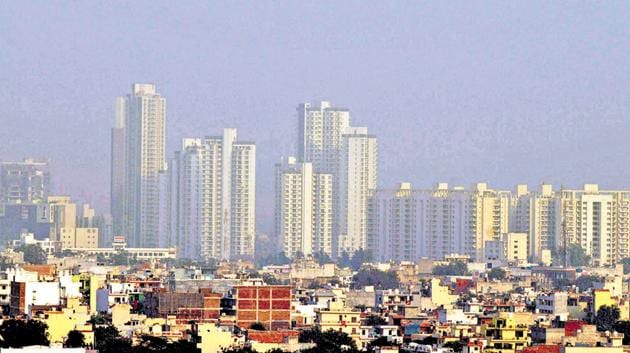India’s urbanisation not a problem, but an opportunity to grow sustainably
With India, China, Nigeria expected to account for a third of world’s urban growth by 2050, it’s time we gave cities, big and small, their due by meeting their unique needs in a planned way.
The 2018 Revision of World Urbanisation Prospects by the UN Department of Economic and Social Affairs (UNDESA), suggests that currently, 55% of the world population lives in urban areas. This is expected to grow to 68% by 2050. India, China and Nigeria will account for more than a third of this projected growth. Therefore, managing urban growth is going to be the most important challenge for this century, especially for next couple of decades, and especially in these countries. However, the problem will be even more challenging in India.

The same report suggests that Delhi will become the most populated city and that too in less than 10 years. The population of Delhi’s urban agglomeration will reach 3.7 crores in 2028 against Tokyo’s 3.6 crores. Tokyo is currently the most populated city in the world.
So, how will Delhi and its urban agglomeration solve the problems of transport, housing, energy, jobs etc for its residents?
One way to a solve a problem is to look at how a similar issue has been addressed elsewhere. For example, Metro rail in India has scaled up after the launch of Delhi Metro. This is because cities could learn for Delhi Metro’s experience and replicate the same. But in the case of urban management at this scale, there is no parallel example.
Therefore, India needs to devise its own strategy to address these issues and here are three key things that can be looked at:
Looking at cities beyond political boundaries
The problem of a city is not confined to its political boundary even as the actions may be. Let me explain this by taking the example of air pollution in Delhi-NCR. Air flow does not follow administrative or political boundaries. Therefore, in order to address air pollution in the national capital region, actions must be taken in the ‘air shed’ area of Delhi. This means that actions should be taken in Delhi, Haryana, Punjab, Uttar Pradesh and Rajasthan for checking air pollution in Delhi. However, this does not happen on ground and lack of it is confined to respective states. The same issue can also be seen in other sectors, such as transport.
Therefore, it is important to look at cities beyond their administrative boundaries and develop plans for cities along with their regions. Yes, the approach needs to be much better than that of the National Capital Region Planning Board (NCRPB).
Preparing a blue print for urbanisation
A couple of years ago, a World Bank report described India’s urbanisation as “messy and hidden”. The study estimated that India has an urban population in excess of 55% as against the census statistics of 31%. The reason for this discrepancy was on account of the fact that cities like Delhi have seen maximum population growth on the fringe. What is interesting in this finding is the fact that a lot of such fringe areas were technically outside the administrative boundary of the city. And so, such areas may exhibit all the characteristics of an urban area, but are not classified as urban. Therefore, the result is that while core areas of city remain, they are seeing stagnant or declining economic activity, and the peripheral areas are seeing growth. This type of low-density sprawled development in these peri-urban areas are putting extreme stress on the overall resources. Therefore, we need a blue print for urbanisation in the country which will help in advancing planned and sustainable development of urban areas.
Creating differentiated systems for planning
The other big problem with our system is that we use the same planning framework for any and every urban area in the country. For example, the approach to planning Delhi is same as planning for Gurugram, even though the size, need and context may be different. It doesn’t work. It is important to develop a planning framework that responds the needs and the context of the environment.
The question to us is that why should schemes like Government of India’s Smart Cities mission, which intends to develop 100 smart cities, use the same approach to plan for an area in New Delhi as Tirupati? It’s important to remember the large cities like Delhi have access to resources, knowledge and finance and therefore, their approach is totally different from that of say Sonipat, which is still trying to develop. For example, there is a provision to give special status to large cities in China and United Kingdom.
Therefore, we need to develop graded systems of planning and do away with the cookie cutter approach.
For far too long India has neglected the reality of urbanisation and the issues that comes with it. It’s time to give due attention to urban areas to make them work. India’s urbanisation is not only a challenge but also an opportunity, provided we can make it work.
(Amit Bhatt is the director- integrated transport, WRI India)
Stay updated with all the Breaking News and Latest News from Mumbai. Click here for comprehensive coverage of top Cities including Bengaluru, Delhi, Hyderabad, and more across India along with Stay informed on the latest happenings in World News.
Stay updated with all the Breaking News and Latest News from Mumbai. Click here for comprehensive coverage of top Cities including Bengaluru, Delhi, Hyderabad, and more across India along with Stay informed on the latest happenings in World News.






